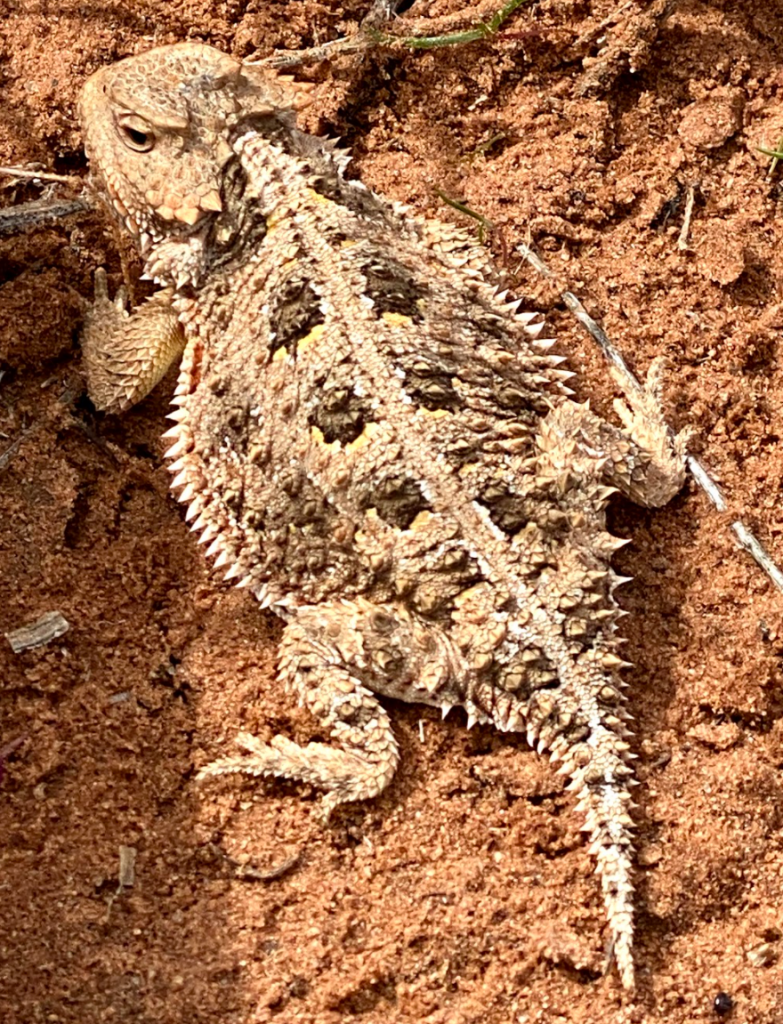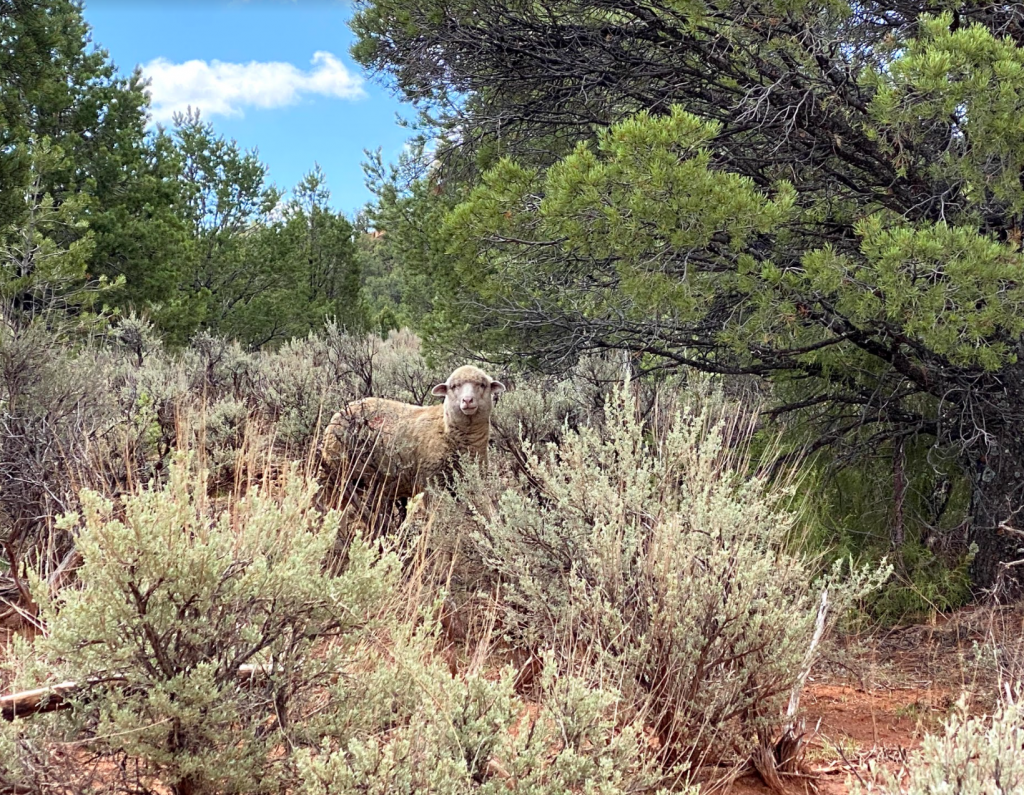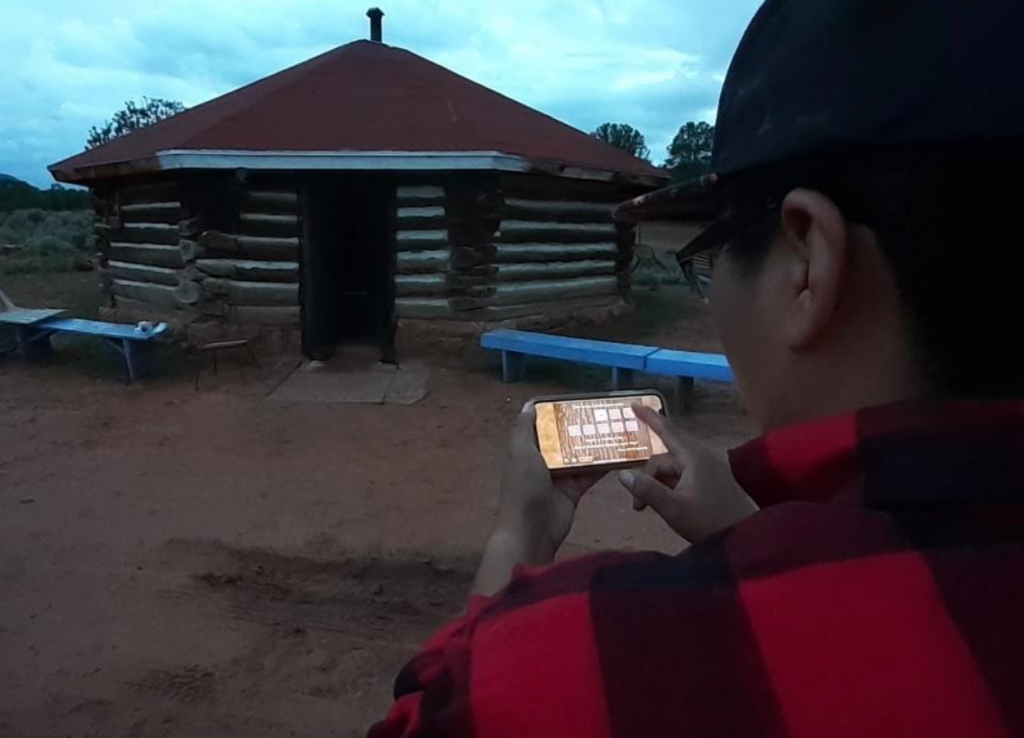
Herding in the mountains during the high desert monsoon season was breathtaking. The ground was soft and felt like walking on flour. The horned toads got a chance to cool off and were out hunting for insects. We saw two large ones!

The first I discovered about herding sheep in or near the mountains is that it is DIFFICULT! I had become acclimated to sea level elevation after four years of living in Greater Seattle. Our sheep were over 7,000 feet above sea level. Crossing 15-foot ravines had me huffing and puffing. I would recommend a horse or at least an ATV in rough areas. Maybe someday I will go so far as to deploy a drone to track any stray sheep, because on the second day our herd split. Imagine trying to herd 300 sheep through there! My grandma and her sisters would herd 300 sheep all at once. How did they do that?

When the sheep were back in the corral at the end of the day, I logged into Making Camp Premium from our off-grid hogan. All of 7 Generation Games are designed to run both on and offline in remote areas. Our sheep camp is no exception. I was using a cellular signal, but I imagine I would do just as well with a hotspot!
At the end of both days, after finishing the corral chores, we would chillax in the hogan. All day, black stink beetles, or Eleodes armatus, heralded the slow rainy season. Some beetles even found their way inside the hogan every night. In my opinion, the best thing to do if you find a large stink beetle on the dirt floor of a hogan is simply to leave him be, as making him feel threatened may prompt him to release noxious smells that would get everyone gagging. The beetles even point their rear ends up at the sky in your general direction, so best to head back to sleep and maybe put your shoes on the shelf so him and his friends don’t use it as a hotel.
Believe it or not, our flock was approached by a local coyote. Since we were downwind, our guard dogs and sheep dogs caught his scent and they were off like a shot, leaving clouds of dust in their wakes. Then, we heard the howls. Our sheep spooked a little and headed away from the commotion. The dogs pursued the coyote. Though he ran away, it was enough to remind us that our sheep could not be left alone for too long. This only served to remind me that anything could happen while herding sheep and to be on guard at all times.
At every point, I felt Dine’ traditions and beliefs about herding weigh on me. I remembered a few Dine’ taboos about sheep I had read about or heard. I felt they served as reminders now that the sheep life is not for the faint of heart, that our Dine’ livelihoods relied heavily on it, for income, food, and resources, that had to be treated seriously.
I sincerely hope I learn more about our cultural ways, so that I can teach others about these experiences. There is so much more that I wish we could put into our video game, Making Camp Navajo. I hope students will come to enjoy it and that they will make forays into learning about our cultural history and our land-based livelihoods that are still with us now.
